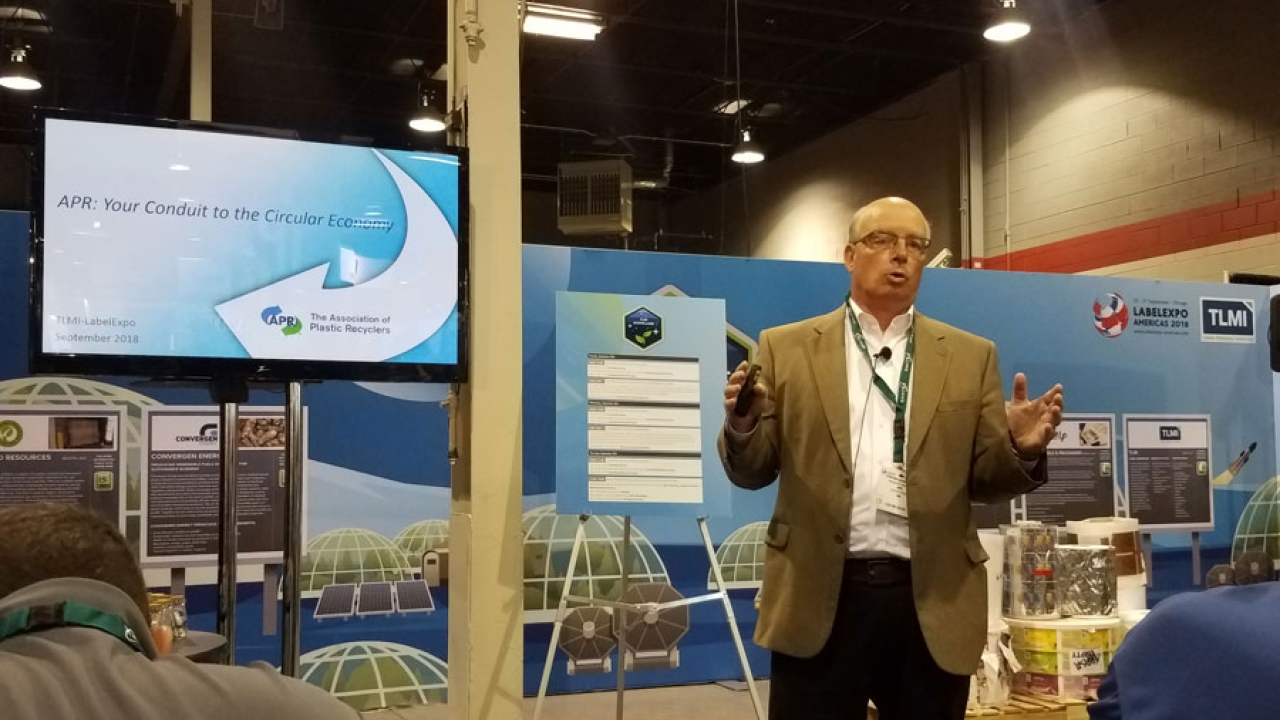Association of Plastic Recyclers presents on circular economy
Steve Alexander, president and CEO of the Association of Plastic Recyclers, presented ‘APR: Your Conduit to the Circular Economy’, in the TLMI Ecovillage at Labelexpo Americas 2018.

Circular economy, a model endorsed by the Ellen MacArthur Foundation, promotes the recovery and restoration of products, components, and materials through strategies like reuse, repair, remanufacture or recycling.
‘At end of the day, there needs to be a market demand for the recycling industry,’ said Alexander.
He added the pressure for brands to meet stricter recycling regulations will only intensify in the coming months. ‘To close the [circular economy] loop, packaging needs to get collected and recycled into new products. You can’t expect to generate quality secondary product with bad product going in.’
The first step to meeting product recyclability guidelines starts in the early creative stages. ‘We [APR] continue to be awed by the lack of understanding on the implication of not designing for recyclability,’ said Alexander. ‘We go to consumer brands to train engineers on our design program because we want product design engineers to design for recyclability from the inception.’
Anticipated challenges to responsible design, production and recycling will largely concern added expenses. ‘Asking your customers to change the composition of their products can be difficult for their marketing, procurement and costs to produce,’ explained Alexander. ‘When you’re trying to make a change and increase pricing, it’s not an easy push.’
An impressive crowd convened in the TLMI Ecovillage feature area at Labelexpo Americas 2018 for industry updates and changing requirements to global plastics protocol.
One attendee asked if more stringent recycling regulations will push some brands away from plastic products altogether, to which Alexander replied: ‘Yes,, but the recycling rates for some of those other products are not as strong as they once were. Transferring from one material to another is expensive, and brands also want to be identifiable. The consumer only takes 3.5 seconds to determine which product to look at.
Stay up to date
Subscribe to the free Label News newsletter and receive the latest content every week. We'll never share your email address.

